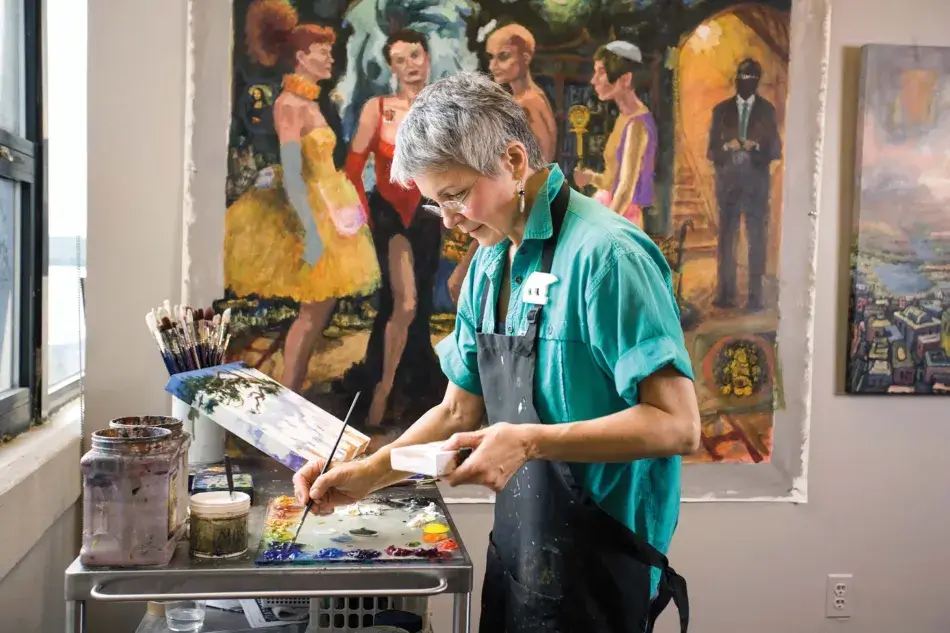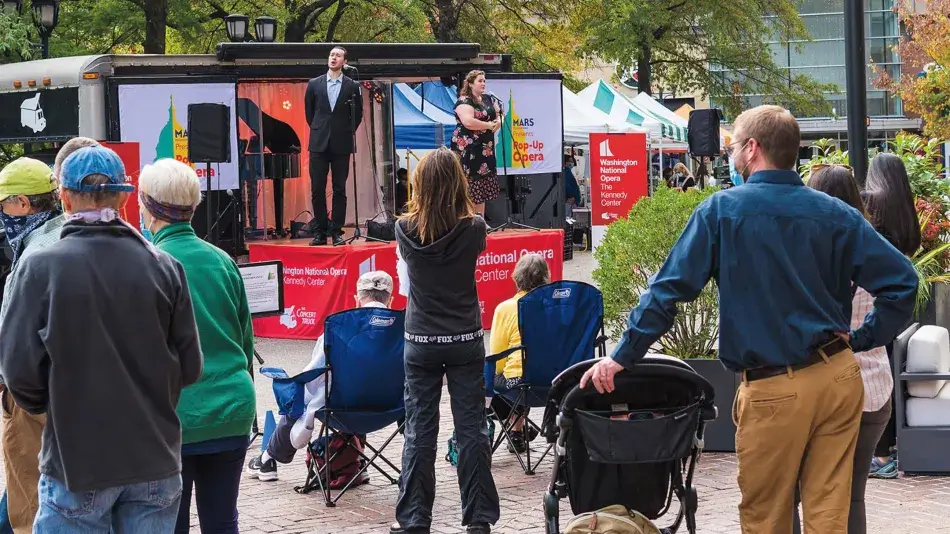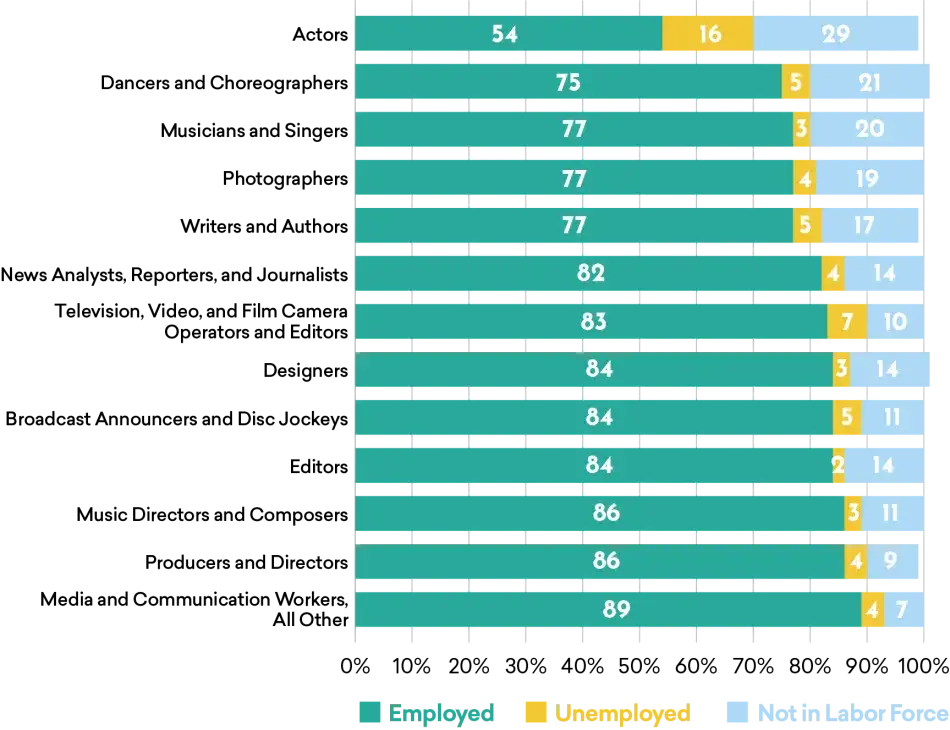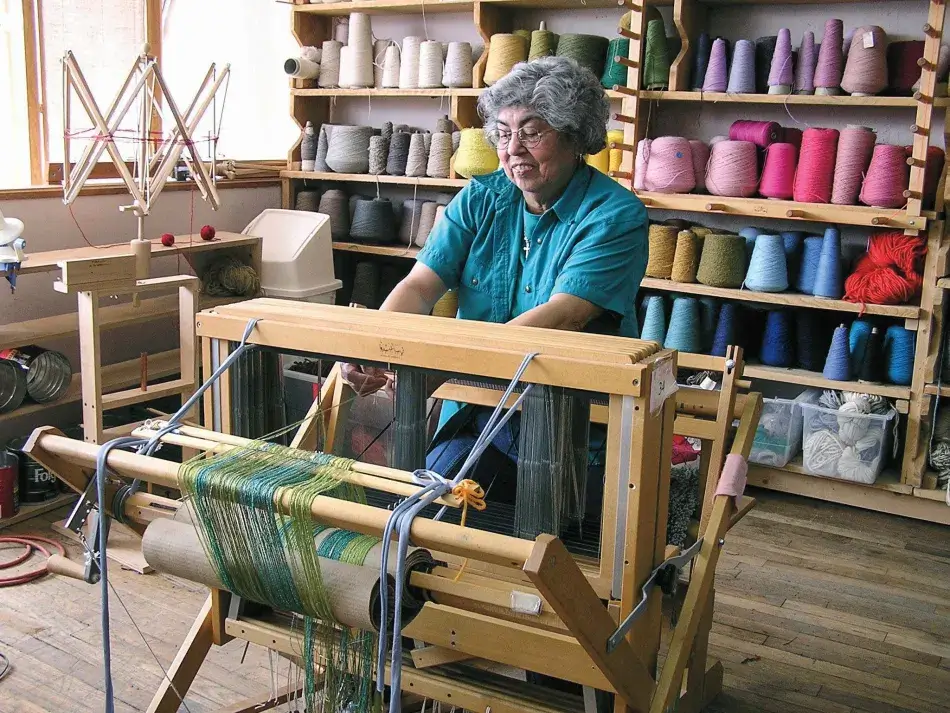Introduction
“This is the only real concern of the artist, to recreate out of the disorder of life that order which is art.”
—James Baldwin1
“Hell! They’ve got to eat just like other people.”
—Harry Hopkins, Director of FDR’s Works Progress Administration during the Great Depression
Art can be many things, but it starts as work. Sadly, that work is consistently undervalued in American society. While a recent national survey found that 81 percent of Americans believe the arts are “a positive experience in a troubled world,” a separate survey conducted for this report found only 22 percent of Americans believe artists contribute “a lot” to the general good of society.2 This gap between American feelings about the personal value of the arts and their perceptions about the value of those who create that art undermines the work artists and cultural workers are able to do, the value they are able to contribute to the health of our communities, and who is able to make a life as an artist. In this report, we address a central question: How can we better recognize the value of artists in our national policy in order to enable the essential work they do?
The report is a product of the Commission on the Arts, a multiyear project of the American Academy that brought together artists, scholars, advocates, and leaders from across the country. The forty-four members of the Commission identified central issues related to the arts and their role in American life and society, including how artists are often undervalued even when their art is rightly considered essential. To build this report, the Commission held virtual listening sessions with experts in the field, commissioned a field scan of community and economic development–focused artist programs around the country, and built partnerships with advocacy groups, experts, and creatives involved in similar efforts.
We discovered that artists desperately need a better system. In the middle of our work, the COVID-19 pandemic struck, deeply impacting the arts and culture sector. Venues shuttered, organizations lost revenue, and artists had gigs and shows canceled, were furloughed, or lost their jobs entirely. Despite such hardships, artists of all kinds, including musicians, dancers, writers, actors, and visual artists, stepped up to help their communities through their artistic abilities. Still, the moment is one of crisis for arts and culture—and also reveals existing cracks in the sector. For some, the pandemic has underscored the precarious nature of their work. Many artists had access to unemployment insurance for the first time in their careers because of the Pandemic Unemployment Assistance program. For others, the crisis highlighted glaring racial and gender inequities in the field, as the loss of income and the consequences of lost income were not distributed evenly.3 The precarity of the present moment reflects the severe lack of supports that were in place before the pandemic. Artists need help now, but simply addressing the immediate crisis will not shore up artists’ lives and protect them from the next shock or from the smaller crises of the everyday.
“The United States needs to recalibrate its market values and support systems to justify an inclusive attitude toward professional artists as essential workers of society.”
—Felix Padrón (Commission member, visual artist, curator, and arts management professional)
We arrived at four key principles that ground our recommendations to build a better system:
- Name and include artists in federal policy. Artists need representation at a federal level, preferably at the executive level, and they need to be explicitly named as a category in legislation and policy. That is the only way to ensure that new federal policies aimed at building our workforce, supporting the economy, and strengthening society will include artists as vital members of the workforce, builders of the economy, and maintainers of community.
- Recognize how creative work happens. Many work-related policies and safety nets are written for a long-lasting single employment relationship that is no longer standard for the general workforce and was never standard for artists. Artists need policy that recognizes as standard independent contract work, multiple employers, entrepreneurship, and inconsistent income—and supports workers accordingly.
- Center equity. The value of artists to America will never be realized without the full participation of Black, Indigenous, and other artists of color. Yet they have been underresourced and underrecognized. Women artists, artists with disabilities, and rural artists have likewise often been underrecognized. Artists need anti-racist policies that equitably fund, train, and support them.
- Think locally, share nationally. Much of artists’ vital work is locally rooted and supported. Policy and funding solutions must recognize this. Funding mechanisms at the national level need to be shaped in a way that supports and amplifies local mechanisms and programs. However, increased national-level sharing of successes and supports is clearly also needed.
To make the case for these policies and practices, we start by articulating the value of artists and cultural workers in American society and dig deeper into the challenges that limit their full participation in those roles. We then build out the four principles above into a set of recommendations to enable an America where the people who make art are as valued as the product of their labors.

The Value of Artists
Arts are essential to many areas of American life, as attested by the already numerous reports, research papers, and paeans to the value of the arts. In the present report we touch on only two main areas—the economic and the civic—while acknowledging that the value of the arts and the artists who make arts possible extends far beyond. (A separate report by this Commission, on the arts in K–12 education, examines many of these other values.)4
That a large share of Americans fails to see the value of the creative sector to society is disappointing, because arts and culture play a tangible role in the American economy, supplying approximately 4.3 percent of the gross domestic product (at least in times undistorted by the pandemic). In 2019, the sector was larger than construction, travel and tourism, and agriculture.5 But creating this value is possible only because millions of Americans are employed in the creative economy.6
Prior to the pandemic, the arts and culture sector was growing. Adjusted for inflation, production of arts and cultural goods and services grew by more than 35 percent from 1998 to 2016, and the sector provided a nearly $33 billion trade surplus to the U.S. economy in 2019.7 Research suggests that the arts and culture sector can also be a key area of state-level economic growth following periods of economic shock (such as a recession) by facilitating sector diversification and general employment growth.8 And greater inclusivity can make room for even more growth. For instance, a recent study indicates that addressing barriers for Black creatives in film and television could increase annual revenues by $10 billion.9
“I would love for every biotech company to have a creative director.”
Christina Agapakis is the creative director at Gingko Bioworks, a biotech company valued at $15 billion.10 She leads a small team of creatives who work on the company’s storytelling and branding, among other things.
Christina trained as a biologist, receiving a doctorate in bioengineering, but she had always been interested in the social dimensions of science. “I liked art, as a kid, but I have immigrant parents. How am I going to have a job as an artist? What does that mean? I’m going to be a scientist, obviously.” After following artists who produce science-engaged art during her graduate studies and writing about them, Christina was hired as Gingko’s first creative director and given license to shape how the company talks about itself and its technologies, starting with social impact.
One of the ways she does this is through art. Artists, she says, “put on a show, and all of a sudden people are thinking about science differently.” For a company that does synthetic biology, an often-controversial area, the question of how to tell its story is a vital one. Under Christina’s direction, the company has explored these issues through projects such as producing the scents of extinct flowers.
Gingko’s three-month creative residency program has invited artists such as Natsai Audrey Chieza (now a curator and mentor in the program) to work on experimental dyeing and printing on fabric using bacteria. According to Christina, time and the space to fail are essential to involving artists and creatives in the work: “Letting people play and fail. It’s rare to find a space where people can do that.”
Convincing some people that creativity is not just the “fun part”—that, in fact, it is part of the real work of the company—has been challenging. Christina says, “I would love for every biotech company to have a creative director.” They can affect how companies make choices about projects, how they shape their teams, and how they envision the company’s story unfolding into the future. “We want to make a different kind of technology: we have to do it differently. And it has to be well-designed.”
The economic benefits go beyond the broad national impact. For instance, artists and culture workers can also be an essential part of the work of building community wealth.11 Other evidence shows that arts and culture have been an important resource for community revitalization and development across the country.12 Native arts can be an essential component of community economic development on reservations.13 Rural counties with performing arts organizations have higher population growth than the average for all rural counties, and they are more likely to host innovative companies in all sectors.14 Other research shows that arts and crafts experience correlates with the production of patentable inventions and the founding of companies.15
Artists also bring immense value to the building of communities and the essentials of our civic infrastructure. As Erik Takeshita, a community development and arts practitioner, told the Commission in one of our listening sessions, “artists’ core competencies are imagining that which doesn’t exist and helping to manifest and make it real.” Artists have long been employed in civic beautification projects, but city and state governments are also coming to recognize that the skills and talents of artists can be applied to developing vibrant and equitable cities and towns. This work is often done at a small scale, but it can have significant impact.16 For instance, the City Artist program at Public Art Saint Paul, which has been active since 2005, employs artists to engage members of the public in urban planning. Pop Up Meeting, an initiative designed by artist Amanda Lovelee through the program, uses an artistically retrofitted city truck to bring urban planning into neighborhoods in an engaging fashion.17 At a slightly larger scale, Smart Growth America’s Transportation for America program has been connecting “arts-friendly insiders in city and state transportation agencies to local artists or local arts agencies” across America.18 In 2020, the program enabled an artist to work on Oakland, California’s “slow streets” program (a project to mitigate the risks of COVID by enabling greater pedestrian use of streets), helping to make the program work better for residents in low-income and commuter neighborhoods. Calandra Childers, acting director of the Seattle Office of Arts and Culture, described programs like these as a way to fund (and thus enable) work that some artists are doing already.
“If the 20th century was about the allocation and distribution of resources, the 21st century is about the distribution of belonging, the renewal of shared purpose, creative placemaking, democratic reform, and the innovation and imagination necessary to advance as a species in the face of urgent climate challenges. . . . We need the tools of artists—their methods of public engagement, their capacity to build empathy and connection, their ability to reimagine spaces and processes and institutions, their power to facilitate and, ultimately, help people and communities adjust to disruptive change.”
—Steven Tepper, Commission member, Dean of the Herberger Institute for Design and the Arts at Arizona State University
Beyond the economic and the civic, artists create immense, if less easily measurable, value for everyone in American society. The most obvious example is the joy, interest, and challenge many of us find in engaging with a new play, attending a local concert, or putting a small print up on our walls. In 2017, three-quarters of U.S. adults consumed artistic or arts-related content through electronic media, and more than half attended artistic, creative, or cultural activities.19 Specific communities also find vital meaning in heritage art forms, from gospel music to beadwork to step dance, that closely intertwine with cultural maintenance. Some scholars, for instance, argue that artistic creativity is a space through which Afro-diasporic people can work against anti-Blackness and innovate community development.20 And the State Department has long recognized the value of artists in cultural diplomacy, organizing trips abroad by musicians such as Dizzy Gillespie and Louis Armstrong in the 1950s and 1960s as part of the Jazz Ambassador program and funding current programs such as Arts Envoy and American Music Abroad.21
Artists and culture workers are essential to America’s economy, communities, and everyday life and well-being, even if their efforts are not often recognized by the broader public. For the nation to benefit fully, however, we need policies that support and empower artists and cultural workers in their creative work.

“Honestly, almost all the departments want one.”
In 2018, the Los Angeles (LA) County Department of Arts and Culture began a Creative Strategist/Artist-in-Residence program to address complex civic issues. The program, a recommendation of the county’s Cultural Equity and Inclusion Initiative, sends a few artists each year to work with hosts like the Department of Mental Health, the Office of Violence Prevention, and the Department of Parks and Recreation. Together, they tackle persistent civic challenges and support equity and inclusion.
In 2019–2020, one of those artists was Deborah Aschheim, who worked with the LA County registrar-recorder/county clerk in efforts to get out the vote for the 2020 election. LA County was rolling out a new voting system, and engaging and informing voters, especially underrepresented ones, was a priority. Focusing on the next generation of voters, Aschheim worked with instructors in arts departments at six community colleges and four California state universities to create projects involving students in civic art-making.
Community engagement is often a key part of artist-in-residence programs. Aschheim wore her tires down driving all over LA County. She met students where they were and listened to them. “They were used to being messaged to. This was a dialogue,” she said. Aschheim, the instructors, and the students cocreated engagement projects to encourage voting. They made voter trading cards, posters in English and Spanish, and airbrushed bags and T-shirts with slogans at events. “It was,” Aschheim said, “a way in to thinking of government as being made up of people like you.”
As director of the county’s Department of Arts and Culture, Kristin Sakoda sees the program “as a way for the County to employ artists for the value they bring to the table.” The program brings together artists and bureaucrats: “There have been studies that show that when you have teams that include artists with non-artists, you see a high degree of innovation and creativity. But the bureaucrats bring something too; they bring a high degree of know-how. You want both at the table.” Aschheim agreed: “Artists are comfortable with problems. Problems are creative jumping off points. It’s healthy to have someone that’s bought into the mission, is on payroll, but is allowed to question things.”
The Department of Arts and Culture works with host departments to determine what challenges they want to address, make sure they are ready to work with an artist, and help facilitate the position’s full course. The position allows artists to pursue their independent projects concurrently. Both the artists and the government find a lot of value in these innovative positions. “Honestly, almost all the departments want one,” Sakoda said. “They think it’s a great opportunity, and we think it’s a great way to employ artists and introduce arts-based civic engagement and problem solving.”
Artists and Creative Workers: The Details
One challenge for forming policy to support artists and creative workers is the complexity of defining and understanding the workforce. Even a simple question, such as “How many artists are there?” is difficult to answer. According to the U.S. Bureau of Labor Statistics, the U.S. workforce includes 2.6 million artists—1.6 percent of all workers—but other estimates conclude that as many as five million are employed in the larger creative economy.22 This disparity is influenced by two main factors: the definition of the creative workforce, and the structures of employment in the arts and culture sector.
Who “counts” as an artist? Most broadly, the creative workforce includes all those involved in the production and dissemination of creative work. The National Endowment for the Arts, for instance, defines two categories: artist occupations, which range from animator to choreographer to author; and other cultural occupations, which range from curators, sound engineers, tour guides, and ushers to printing press operators.23 The U.S. Bureau of Labor Statistics spreads artists and cultural workers across several occupational categories, with “Arts and Design” including occupations such as craft and fine artist, fashion designer, and special effects artist and animator, while entertainment and sports occupations are grouped together, as are media and communication occupations.24 While a broad definition is essential for a full picture of the creative economy, in this report we narrow the focus to artists who are attempting to gain an income from their art at least part-time, in part because the workforce needs of a choreographer and a printing press operator are distinct.25
“Artists and culture workers are essential to America’s economy, communities, and everyday life and well-being.”
How are creative workers employed? Another challenge in creating policy for the creative workforce is the wide range of employment structures and arrangements. Many artists do not practice their art as their primary, wage-earning job. Yet many counts of the workforce focus only on those employed full-time by organizations. For instance, a 2019 study estimates that 12.3 percent of artists held their occupation as a second job (the high was 34.8 percent for musicians, and the low was 7.4 percent for producers and directors).26 In addition, artists are “3.6 times as likely as other workers to be self-employed,” with around 34 percent of artists self-employed in 2012–2016.27
A more recent analysis points to the wide variation among creative occupations. Actors, in particular, were much more likely to be unemployed or out of the labor force than their counterparts in other creative occupations (even in the year before the pandemic), with approximately 16 percent unemployed and another 29 percent not in the labor force in 2019. In comparison, the shares for all creative workers were 4 percent and 15 percent respectively, which were similar to the shares among all those sixteen or older who had been employed in the previous five years (3 percent and 14 percent).28
Figure 1: Employment Status of Creative Workers Prior to the Pandemic (2019)

Source: U.S. Census Bureau, “ACS 1-Year Estimates-Public Use Microdata Sample, 2019.”
This range of employment arrangements complicates efforts to evaluate artists’ income. According to the Bureau of Labor Statistics, “the median annual wage for arts and design occupations was $48,130 in May 2019, which was higher than the median annual wage for all occupations of $39,810.”29 But this conceals a wide and diverse array of employment characteristics in this area. For instance, artists and creative workers are less likely than workers overall to be working full-time/full-year. For example, at the low end of the range among artists, only 22.8 percent of actors were employed full-time for the entire year.30 The average salary for artists is lower than that of other professional workers, and median salaries vary widely across the creative occupations, with dancers/choreographers earning $31,150 and architects earning $76,680.31 And such averages capture only those working full-year/full-time, thus missing many working artists.
Finally, addressing policy to an undifferentiated category of “artists” can overlook the significant differences within the category. The demographics of the creative workforce differ widely by occupation. For instance, while women account for 46 percent of the total artistic workforce, they are overrepresented among dancers/choreographers (81 percent of total) and underrepresented among musicians (only 33 percent).32 Reflecting the physical toll that some creative work can take on participants, the median age for musicians is forty-five, while that of dancers/choreographers is just twenty-six.33 Artists are also less likely than the general population of workers to be non-white or Hispanic, at only 25 percent (compared to 36 percent overall). Like the other demographic differences, however, this varies by occupation; for instance, 44 percent of dancers/choreographers are non-white or Hispanic.34 All of these statistics likely undercount and underrepresent artists and culture bearers from marginalized communities. Research cited by First Peoples Fund estimates that around 40 percent of those on some Native reservations are practicing artists.35
The same systemic barriers that contribute to inequities in income, representation, and recognition also impact who is counted as an artist and who sees cultural work as a viable career path. Understanding the shape and diversity of the arts and creative workforce is thus essential to understanding the workforce challenges and possible areas of need in the sector.
